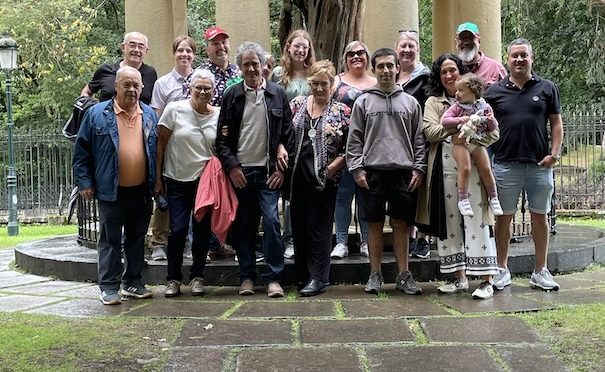The Basque city of Gernika, in the heart of Bizkaia, holds a particularly special place in Basque consciousness. It is hugely important as a symbol of Basque rights and democracy, as kings would have to meet local leaders under the famous Tree of Gernika to swear to uphold the rights of the Basques. However, more recently, Gernika has become a darker symbol, a testament to the horrors of war when it was bombed by the German Air Force at the behest of Franco during the Spanish Civil War.
- Gernika-Lumo was, at one point, two separate villages. Before they joined together in 1882, they were separately called Gernika and Luno. However, it wasn’t until 1983 that they formally changed their name to the combined Gernika-Lumo. The village of Ajangiz was added in 1943. In 1967, other villages, including Arrazua, Kortezubi, Forua, Murueta and Nabarniz, were temporarily annexed into the larger Gernika-Lumo metropolitan area.
- However, before that, Gernika was simply part of the antechurch of Luno. Gernika officially became its own village in 1366 when Tello Alfonso, then Lord of Bizkaia, separated it from the jurisdiction of the antechurch of Luno. It was formed at the crossroads that connected Bermeo to Durango and Bilbao to Elantxobe and Lekeitio. This separation caused conflict between the two over who controlled various lands, which wasn’t resolved until 1882 when they were again merged into a single municipal entity.
- The history of Gernika dates to prehistory, when prehistoric humans painted on the walls of the nearby Santimamiñe cave. Legend says that Jaun Zuria, the White Lord, was given rule of Bizkaia in Gernika, after the battle of Arrigorriaga, said to take place in 870.
- For many years, what would be Gernika was part of the Kingdom of Pamplona, specifically from 931 to 1076 and again between 1112 and 1175, this latter association ending when Castilian troops invaded and broke up the kingdom.
- The most enduring and important symbol of the town, the Tree of Gernika, has been a meeting place to decide laws since time immemorial. At least by 1390, the people of Bizkaia demanded that the king come and swear an oath to uphold their rights and freedoms. The fueros of 1452 established this tradition more formally with the new kings of Castille, with Henry IV taking the oath in 1457. The last monarch to take the oath under the tree was the Spanish regent Maria Christina and her infant daughter Queen Isabella II in 1839.
- Gernika also had a central role in the War of the Bands, which saw rival families fighting one another that evolved into a rural-vs-urban conflict. The Gernika bridge was the scene of multiple fights between the Arteaga and Múgica families in the mid 1400s.
- Of course, on April 26, 1937, Gernika was bombed during the Spanish Civil War by the German air force. The bombing occurred on market day, when civilians were shopping in the streets.
Primary sources: Castaño García, Manu. Gernika-Lumo. Auñamendi Encyclopedia, 2024. Available at: https://aunamendi.eusko-ikaskuntza.eus/en/gernika-lumo/ar-57197/; Guernica, Wikipedia



